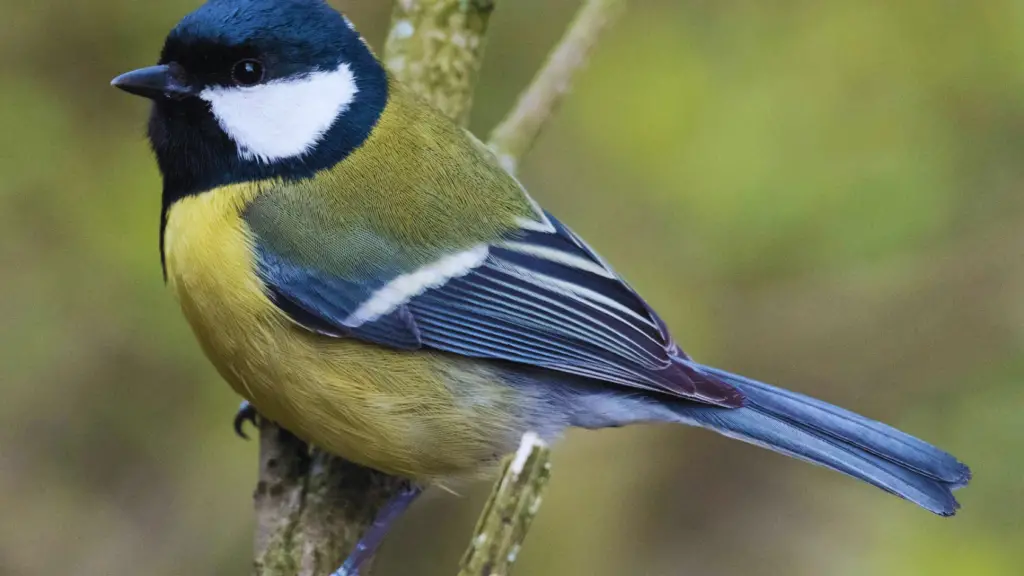Coal Tit vs Great Tit: A comparison of two charismatic tit species. Explore the distinct characteristics, behaviors, and habitats of the coal tit and great tit as we highlight the unique features that set them apart.
If you’re a fan of birdwatching or simply curious about the avian world, you’ll be interested to learn about the differences between the Coal Tit and the Great Tit. These charming bird species share many similarities but also possess unique characteristics that set them apart. In this article, we will explore their identification, behavior, habitat, range, size, song, and migration, providing you with an in-depth understanding of these captivating birds.
Key Takeaways:
- Coal Tits are smaller birds with a black cap and white cheeks, while Great Tits are larger with a black head, white cheek, and yellow breast.
- Coal Tits prefer coniferous forests, while Great Tits are adaptable and can be found in a wide range of habitats.
- Both species have unique songs and vocalizations, with Coal Tits producing a trill and Great Tits repeating a sequence of clear notes.
- Conservation efforts are vital in protecting Coal Tits and Great Tits from habitat loss and the impact of climate change.
Coal Tits: Identifying Features and Behavior
Coal Tits are small passerine birds known for their distinctive appearance and behavior. They measure around 10 centimeters in length and have a black cap, contrasting with their white cheeks and a greyish-brown bodies. Their habit of hanging upside down while foraging is a behavior that sets them apart. Coal Tits are also known for their acrobatic flight patterns and their ability to cache food for later consumption.
When observing Coal Tits, their dark cap and white cheeks are striking features that make them easy to identify. They have small, pointed bills, and their legs and feet are black. Coal Tits are also known for their high-pitched trill-like song, which can be heard throughout their woodland habitats. They have a varied call repertoire, including chirping and scolding calls.
Great Tits: Identifying Features and Behavior
Great Tits, like Coal Tits, belong to the tit family and are slightly larger in size. They measure approximately 14 centimeters in length. Great Tits have a yellow breast, a black head, and a white cheek with a black stripe running through it. They are energetic and agile birds, known for their bold behavior and adaptability. Great Tits are often seen exploring various habitats, including gardens, woodlands, and parks.
Their energetic nature and agility are evident in their foraging behavior. Great Tits can hang upside down as they search for insects and caterpillars on tree trunks and branches. They are also opportunistic feeders, consuming a wide variety of food, including seeds, nuts, and berries. Great Tits can be seen visiting bird feeders in gardens, often hanging from them as they extract the food.
Habitat and Range Comparison

Coal Tits and Great Tits are native to Europe and parts of Asia, but their habitat preferences differ slightly. Coal Tits are commonly found in coniferous forests, preferring dense woodland areas with an abundance of trees. They are also known to inhabit gardens with coniferous trees. Great Tits, on the other hand, are more adaptable and can be found in a wide range of habitats, including woodlands, gardens, parks, and even urban areas. Their adaptability enables Great Tits to thrive in various environments, making them one of the most widespread garden birds in Europe.
| Coal Tit | Great Tit | |
|---|---|---|
| Habitat Preference | Coniferous Forests | Various habitats including gardens, parks and urban areas |
| Range | Eurasia and parts of Asia | Eurasia and parts of Asia |
Plumage Variations
The plumage of Coal Tits and Great Tits differs in certain aspects. Coal Tits have a black cap on their heads, extending down to their eyes, with a white patch on their cheeks. They exhibit a combination of greyish-brown on their upperparts and a paler grey on their underparts.
| Coal tit plumage: | Black cap on head with white cheeks |
|---|---|
| Greyish-brown upperparts | |
| Paler grey underparts |
In contrast, Great Tits have a black head with a white cheek and a distinctive yellow breast. Their upperparts are predominantly olive-green, and their underparts are yellow.
| Great tit plumage: | Black head with white cheek and yellow breast |
|---|---|
| Olive-green upperparts | |
| Yellow underparts |
The distinctive plumage of both species makes them easily recognizable, even from a distance.
Size Comparison
When comparing Coal Tits and Great Tits, you’ll notice a difference in their size. Great Tits are larger in size, measuring around 14 centimeters in length, while Coal Tits are smaller, measuring approximately 10 centimeters in length. The size difference is noticeable, with Great Tits appearing visibly larger and more robust. However, both species possess unique characteristics and behaviors that make them fascinating to observe.
Vocalizations and Songs
Both Coal Tits and Great Tits are known for their distinctive songs and vocalizations. Coal Tits produce a song that consists of a series of high-pitched notes, often described as a trill. Their calls are typically short and sharp. Great Tits, on the other hand, have a varied repertoire of songs and calls. Their most recognizable song is a repeated sequence of clear notes, often described as “teacher, teacher, teacher.” They also produce various calls, including contact calls and alarm calls.
Migration Patterns
Coal Tits and Great Tits exhibit different patterns of migration, depending on various factors such as climate, food availability, and breeding cycles.
| Coal Tit | Great Tit | |
|---|---|---|
| Migratory Status | Partial Migrant | Resident Bird |
| Migratory Distance | Short-Distance Migrant | Occasional Long-Distance Migrant (Northern Populations) |
| Migratory Season | Primarily Winter Time | Seasonal Movement During Winter with Some Populations |
Coal Tits are considered partial migrants, with only some individuals undertaking seasonal movements to escape harsh winters. The majority of Coal Tits remain in their breeding areas throughout the year, preferring coniferous forests with abundant food and sufficient shelter. Coal Tits may also undertake short-distance migrations to search for better food sources.
Great Tits, on the other hand, are mainly resident birds that do not migrate extensively. However, some populations from northern regions may undertake long-distance migrations to southern areas during the winter season. Great Tits are adaptable birds, capable of adjusting to various environments, including urban areas, gardens, woodlands, and parks.
Similarities and Differences Summary
After exploring the characteristics of Coal Tits and Great Tits, it is clear that while they belong to the same family, they have distinct differences that set them apart.
| Characteristic | Coal Tit | Great Tit |
|---|---|---|
| Appearance | Black cap, white cheeks, greyish-brown body | Black head, white cheek, yellow breast, olive-green upperparts |
| Behavior | Hanging upside down while foraging, acrobatic flight, food caching | Bold, energetic, adaptable |
| Habitat | Coniferous forests, dense woodland areas | Various habitats including woodlands, gardens, parks, and urban areas |
| Size | Approximately 10 centimeters in length | Approximately 14 centimeters in length |
| Song | High-pitched notes, short and sharp calls | Varied repertoire of songs and calls, repeated “teacher, teacher, teacher” song |
| Migration | Partial migration with some individuals migrating short distances | Primarily resident birds with some individuals migrating in northern regions during winter |
By understanding these differences, you can confidently identify each species when observing them in the wild. Whether it’s their unique plumage, behavior, or habitat preferences, Coal Tits and Great Tits are fascinating birds that add to the beauty and diversity of avian life.
Tips for Identifying Coal Tits and Great Tits
Identifying Coal Tits and Great Tits can be challenging, especially for beginners. Here are a few tips to help you differentiate between these two species:
| Coal Tit | Great Tit |
|---|---|
| Size: Coal Tits are smaller in size, measuring approximately 10 centimeters in length. | Size: Great Tits are larger in size, measuring around 14 centimeters in length. |
| Head: Coal Tits have a black cap on their heads that extends down to their eyes. | Head: Great Tits have a black head with a white cheek and a distinctive yellow breast. |
| Body: Coal Tits have greyish-brown upperparts and a paler grey underparts. | Body: Great Tits have predominantly olive-green upperparts and yellow underparts. |
| Cheeks: Coal Tits have white cheeks with a black stripe below the eye. | Cheeks: Great Tits have a white cheek with a black stripe running through it. |
| Habitat: Coal Tits are commonly found in coniferous forests. | Habitat: Great Tits can be found in various habitats, including gardens, woodlands, parks, and urban areas. |
| Song: Coal Tits produce a high-pitched song, often described as a trill. | Song: Great Tits have a varied repertoire of songs and calls, with their most recognizable song being a repeated sequence of clear notes, often described as “teacher, teacher, teacher.” |
Remember, when observing these birds, it’s essential to pay attention to their unique features, including their size, plumage, habitat preferences, and songs. With practice and experience, you’ll be able to distinguish between Coal Tits and Great Tits accurately.
Enhancing Your Birdwatching Experience

Birdwatching is a wonderful way to connect with nature, and observing birds like Coal Tits and Great Tits can provide a meaningful and rewarding experience. Here are some tips to enhance your birdwatching experience and improve your ability to identify these species in the wild:
Invest in Proper Equipment
A good pair of binoculars can make a significant difference in your ability to observe birds. Look for models with a magnification of at least 8x and a clear, bright image. A field guide can also be helpful in identifying different species and learning about their behaviors and habitats. Consider investing in a notebook to keep track of your observations and record any interesting details you notice.
Learn Their Behaviors
Understanding the behaviors of Coal Tits and Great Tits can help you identify them more easily. For example, Coal Tits are known for their habit of hanging upside down while foraging, while Great Tits are often seen exploring various habitats, including gardens, woodlands, and parks. Paying attention to their vocalizations can also help you identify them.
Be Patient and Respectful
Birdwatching requires patience and respect for the birds you are observing. Move slowly and quietly to avoid disturbing them, and avoid getting too close to their nests or feeding areas. Remember that these birds are living creatures and should be treated with care and respect.
By following these tips, you can enhance your birdwatching experience and develop a deeper appreciation for the beauty and diversity of avian species, including Coal Tits and Great Tits.
Conservation Status and Concerns
While Coal Tits and Great Tits are not currently considered endangered species, their populations are affected by several factors, including habitat loss due to deforestation and the impact of climate change. Coal Tits rely heavily on coniferous forests for their survival and may face challenges if these habitats continue to decline. Great Tits are more adaptable to various environments but are still vulnerable to habitat fragmentation and alteration.
Protecting and restoring woodland habitats is crucial in ensuring the long-term survival of these charming bird species. Supporting conservation organizations and initiatives that focus on habitat preservation and management can also contribute to their well-being. Additionally, taking small actions such as providing bird feeders and nest boxes can help supplement their food and shelter needs, especially in urban areas.
By advocating for the preservation of woodland habitats, we can ensure that Coal Tits and Great Tits, along with other bird species, continue to thrive and delight future generations of birdwatchers.
Interesting Facts about Coal Tits and Great Tits
As you’ve learned in this article, Coal Tits and Great Tits are fascinating birds with unique characteristics and behaviors. Here are some interesting facts about these charming species:
- Coal Tits are known for their ability to extract insects from tree bark by wedging them in crevices and hammering them with their beaks. This behavior is called “percussive foraging.”
- Great Tits are skilled mimics and can imitate the calls of a variety of bird species, including birds of prey, to deceive and intimidate potential threats.
- Coal Tits and Great Tits are highly adaptable birds and have successfully colonized urban areas in addition to their natural habitats.
- Great Tits have been observed using tools, such as small sticks, to extract food from hard-to-reach places.
- Coal Tits have a unique habit of lining their nests with hair or fur, which provides insulation and a cozy environment for their young.
- Great Tits are sometimes called “parlor pets” due to their playful and curious nature, which makes them popular as pets in some parts of Europe.
These are just a few of the many interesting facts about Coal Tits and Great Tits. By getting to know these birds better, you can appreciate their unique features and behaviors even more.
Key Takeaways
After learning about the Coal Tit and Great Tit, you now have a better understanding of their key differences and similarities. Remember that Coal Tits are smaller in size, with a black cap on their head, white cheeks, and a greyish-brown body, while Great Tits are larger, with a black head, white cheek, yellow breast, and olive-green upperparts. Pay attention to their habitat preferences, behavior, and vocalizations when identifying them in the field.
Don’t forget these interesting facts about these birds, such as Coal Tits’ acrobatic foraging habits, and Great Tits’ ability to mimic other bird species’ calls. Consider investing in birdwatching equipment like binoculars and field guides to enhance your birdwatching experience. Remember to take small actions to support their well-being, like providing bird feeders and supporting conservation efforts.
By understanding and appreciating these charming bird species, you contribute to their conservation and ensure their survival for future generations to enjoy. Keep exploring the fascinating world of birds, and don’t forget to share your knowledge and appreciation with others!
Conclusion
Now that you have explored the differences and similarities between Coal Tits and Great Tits, you can appreciate their unique qualities and behaviors. By utilizing the tips for identification, you can confidently spot these fascinating birds in the field and enhance your birdwatching experience. Remember to be respectful of the birds and their habitats, and consider supporting conservation initiatives to ensure their survival. By learning about and protecting these charming bird species, you contribute to the preservation of the natural world for future generations to marvel at.
Coal Tit Vs Great Tit: FAQs
Q: What are the differences between Coal Tits and Great Tits?
A: Coal Tits are smaller in size with a black cap, white cheeks, and a greyish-brown body. Great Tits, on the other hand, are larger with a black head, white cheek, yellow breast, and olive-green upperparts.
Q: How can I identify a Coal Tit?
A: Coal Tits can be identified by their black cap, white cheeks, and greyish-brown body. They are also known for their habit of hanging upside down while foraging.
Q: How can I identify a Great Tit?
A: Great Tits have a black head, white cheek, yellow breast, and olive-green upperparts. They are slightly larger in size compared to Coal Tits.
Q: What are the habitat preferences of Coal Tits and Great Tits?
A: Coal Tits prefer coniferous forests, while Great Tits are more adaptable and can be found in various habitats, including woodlands, gardens, parks, and urban areas.
Q: How does the plumage of Coal Tits and Great Tits differ?
A: Coal Tits have a black cap, white cheeks, and a combination of greyish-brown on their upperparts and paler grey on their underparts. Great Tits have a black head, a white cheek, a distinctive yellow breast, and olive-green upperparts.
Q: Are there any size differences between Coal Tits and Great Tits?
A: Yes, Great Tits are larger than Coal Tits. Great Tits measure around 14 centimeters, while Coal Tits are approximately 10 centimeters in length.
Q: What are the vocalizations and songs of Coal Tits and Great Tits like?
A: Coal Tits produce a song consisting of high-pitched notes, described as a trill, and their calls are short and sharp. Great Tits have a varied repertoire of songs and calls, with their most recognizable song being a repeated sequence of clear notes, often described as “teacher, teacher, teacher.”
Q: Do Coal Tits and Great Tits migrate?
A: Coal Tits are considered partial migrants, with some individuals migrating and others remaining in their breeding areas year-round. Great Tits are primarily resident birds, but some individuals from northern regions may migrate south during the winter.
Q: What are some tips for identifying Coal Tits and Great Tits?
A: Look for the distinctive black cap and white cheeks of Coal Tits, and the yellow breast and olive-green upperparts of Great Tits. Paying attention to their size, habitat preferences, and song patterns can also aid in identification.
Q: How can I enhance my birdwatching experience when observing Coal Tits and Great Tits?
A: Consider investing in a good pair of binoculars, a field guide, and a notebook to record your observations. Learning about their behaviors, habitats, and vocalizations will also help you identify and appreciate them more effectively.
Q: What are the conservation concerns for Coal Tits and Great Tits?
A: While both species have stable populations, habitat loss due to deforestation and the impact of climate change are ongoing concerns. Supporting conservation efforts and providing bird feeders and nest boxes can contribute to their well-being.
Q: Can you share some interesting facts about Coal Tits and Great Tits?
A: Coal Tits are skilled at extracting insects from branches by wedging them in crevices and hammering them with their beaks. Great Tits can mimic the calls of other bird species, including birds of prey, to deceive and intimidate potential threats.
Q: What are the key takeaways from comparing Coal Tits and Great Tits?
A: Understanding the differences in appearance, behavior, habitat preferences, and vocalizations between Coal Tits and Great Tits enriches our knowledge and appreciation of these captivating bird species.
Q: Why is it important to learn about Coal Tits and Great Tits and contribute to their conservation?
A: By observing and learning about these birds, we can appreciate their unique qualities and contribute to the preservation of their habitats, ensuring their survival for future generations to enjoy.













